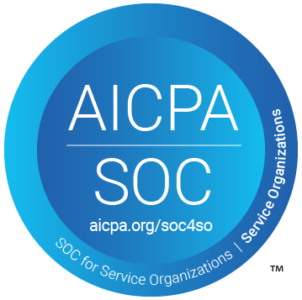Modern governance tools deliver measurable business outcomes. When you embed governance into your data strategy, you can:
Unlock hidden revenue opportunities with unified data from a single source of truth.
- Boost efficiency by giving stakeholders real-time insights without hours of data preparation.
- Reduce risks by supporting cloud migrations and hybrid architectures without disruption.
Most importantly, data governance is the foundation for scaling AI. Without governed, trusted data, your AI initiatives may stall or fall short of expectations.
What are Data Governance Tools?
Data governance is the discipline of ensuring enterprise data is safe, trusted and fit for its intended purpose. It establishes the policies and controls that safeguard data quality, consistency, lineage, security, access control, and compliance.
Data governance tools are the solutions that make this possible. They help manage, monitor, and enforce policies consistently throughout your enterprise. Learn more about building a modern governance framework in this post.
Because data environments are so diverse, the governance tool landscape includes multiple categories, each one solving a specific challenge.
- Data catalog tools organize and classify data for easier discovery and self-service access
- Data lineage tools track the journey of data across systems for transparency and impact
- Data quality tools continuously monitor and improve data accuracy and consistency
- Policy and compliance tools automate the enforcement of regulatory and internal data policies
- Real-time governance and integration tools govern data in motion for AI and real-time analytics
- All-in-one governance platforms deliver comprehensive, end-to-end governance capabilities in a single solution
Most enterprises will need a combination of these tools to create a governance ecosystem that addresses both batch and real-time data needs.
Why Do Companies Need Data Governance Tools?
Enterprise data is growing at a breakneck pace—in greater volumes, in more diverse structures and formats, and growing at unprecedented rates. IDC reports that roughly 90% of enterprise data is unstructured, which makes effective governance even more critical. The market reflects that urgency, with enterprise data management projected to reach $221.6 billion by 2030.
Without robust governance, your enterprise’s data problems can multiply fast. Data silos and inconsistent definitions leave teams arguing over which reports they can trust. A lack of trust in data quality slows decision-making and stalls AI initiatives. And compliance risks and poor visibility into data usage expose your organization to regulatory fines and reputational damage.
Governance Is a Strategic Imperative
If your teams do not trust their data, your AI initiatives are dead in the water. And that trust is hard to win back. Only 43% of C-suite leaders who see meaningful gains from generative AI are reinvesting in data quality and knowledge management, according to Google. The other 57% are not reinvesting, putting their future generative AI initiatives at risk.
These statistics underlie a harsh reality: Without rigorous governance, successful AI initiatives simply aren’t possible. They can even open your organization to risks like regulatory fines and exposure of sensitive data.
For these reasons, data governance is about more than checking all the compliance boxes. It’s about making your business more agile, scalable, and innovative.
MIT Report: 95% of all generative AI pilots are failing
Key Business Outcomes of Effective Data Governance
A modern and effective data governance framework brings benefits far beyond compliance, including:
- Successful AI use cases supported by trusted, governed data
- Reduced complexity and costs by consolidating tools and automating governance to lower engineering overhead and reduce total cost of ownership (TCO)
- Stronger compliance and less risk with built-in features such as automated PII detection and real-time data masking that close audit gaps
- Enhanced business agility so teams can launch new data products quickly, build AI pipelines, and deliver operational insights without infrastructure bottlenecks
Despite these benefits, most enterprises still grapple with poor governance. Only about 36% of organizations say they have high-quality data, AI governance and security policies, and role-specific training in place.
Why Real-Time Governance Matters
Traditional governance tools operate on data at rest, meaning they govern data after it’s been ingested into databases or data warehouses. By then, issues like quality failures, compliance violations, or security risks have already slipped downstream.
Modern platforms like Striim work differently. Striim enforces policies while data is on the move, ensuring compliance and quality in real time. That’s precisely what today’s AI-driven enterprises need.
The 9 Best Data Governance Tools 2025
With so many options on the market, it can be difficult to know where to look. The best data governance tool is the one that fits your organization’s specific needs, whether it’s identifying fraudulent activity in real time, adhering to a strict compliance regimen, or providing a richly personalized customer experience. Below, we’ve highlighted nine leading solutions, taking a balanced look at their features, strengths, limitations, and best-fit use cases.
Alation
Alation is an enterprise-grade data governance solution that helps organizations discover, understand, and manage their data assets to drive better decision-making and collaboration.
Key features
- Centralized data catalog and search across data lakes, data warehouses, and BI tools with natural-language querying.
- Governance and policy center with workflow automation, dynamic masking, row-level access, and trust markers.
- AI-driven metadata curation to automate catalog enrichment and asset discovery.
Best fit
Companies migrating to cloud architectures with self-service goals.
Pros
- Intuitive search and discovery.
- Collaboration features like annotation, glossary sharing, and discussion.
- Broad ecosystem integrations across cloud and analytics platforms.
Cons
- Not a full-stack solution; requires integration with tools like dbt or Snowflake.
- Complex and resource-intensive setup and configuration.
- User interface may require training for non-technical users.
Pricing
- Free trial available without credit card.
- Enterprise-tiered subscriptions based on roles, with add-on costs for connectors and AI features.
Apache Atlas
Apache Atlas is an open-source metadata management and data governance platform that enables organizations to classify, catalog, and manage their data assets for improved compliance and collaboration.
Key features
- Open-source metadata management and governance framework backed by the Apache foundation.
- Data lineage visualization to track data flow and transformations, with OpenLineage support.
- Dynamic classifications and tags that propagate across lineage for consistency and discovery.
Best fit
Organizations already using Hadoop or big data ecosystems.
Pros
- Strong lineage and classification support at enterprise scale.
- Native integration with Hadoop stack and extensibility through RESTful APIs.
- Highly customizable for modeling entries, connectors, and workflows.
Cons
- Complex setup and learning curve requiring engineering expertise.
- Performance and UI can lag compared to commercial solutions.
- Infrastructure overhead from dependencies like Kafka, Solr, and HBase.
- No managed support; community-driven unless using third-party vendors.
Pricing
- Free under Apache License 2.0.
- Hidden costs in infrastructure, maintenance, and skilled resources.
- No free trial or managed version.
Ataccama ONE
Ataccama is an AI-powered data management and governance platform centered on data quality. It’s a unified, cloud-native design that integrates quality, catalog, lineage, observability, and governance to continuously improve the reliability of enterprise data, making data quality the engine of trust that powers AI, analytics, and operations.
Key features
- Data quality–driven platform unifying catalog, lineage, observability, and governance
- AI-powered automation for discovery, classification, rule creation, and remediation
- Cloud-native, modular architecture with pushdown processing and real-time scalability
Best fit
Enterprises seeking a unified, data quality-centric foundation for governance, AI, and compliance
Pros
- End-to-end, quality-first platform
- GenAI-assisted rule generation and metadata enrichment accelerate productivity Reusable DQ rules and edge processing deliver scalable, secure quality across all data sources
- Proven enterprise success in complex, hybrid environments (financial services, manufacturing, insurance)
Cons
- Enterprise-grade deployment may demand infrastructure planning for optimal performance.
- Broad functionality may require initial enablement and training
Pricing
- Usage-based pricing.
- Free trial available upon request.
Atlan
Atlan is a modern data collaboration and governance platform that helps teams discover, organize, and collaborate on data assets seamlessly across the data ecosystem.
Key features
- Heterogeneous, real-time replication across multiple database types with exactly-once delivery
- Log-based CDC with minimal impact on source systems
- Flexible integration, staging databases, and evolving schema support
Best fit
Organizations seeking automation, flexibility, and a self-service data culture.
Pros
- User-friendly, collaborative design.
- Integrations with cloud platforms and BI tools for metadata-driven governance.
- Governance automation with playbooks.
Cons
- Non-transparent pricing.
- Broad functionality creates a steep learning curve.
- Fewer granular controls compared to compliance-heavy governance platforms.
- Technical challenges with schema ingestion dependencies and limited containerized deployment options.
Pricing
- Usage-based pricing.
- Free trial typically available, although details require contact with sales.
Collibra
Collibra is a data intelligence platform that empowers organizations to discover, govern, and trust their data, enabling better decision-making and compliance.
Key features
- Centralized platform for data and AI governance with catalog, privacy, lineage, quality, helpdesk, and policy management modules.
- Automated governance workflows for policy enforcement, incident management, and data approvals.
- Active metadata with AI Copilot to streamline discovery and simplify data search.
Best fit
Organizations able to invest heavily in implementation, integration, and ongoing maintenance.
Pros
- Robust workflow automation and policy enforcement.
- Strong data catalog with automated classification, annotations, and lineage visualization.
- Pushdown architecture improves performance by processing jobs in data warehouses.
Cons
- Lengthy and complex implementations often requiring six to 12 months and systems integrators.
- Opaque pricing structure with separate licensing and connector fees.
- Possible performance downgrades when managing very large datasets.
Pricing
- Usage based pricing.
- Additional ownership costs for scaling, connectors, infrastructure, and implementation resources.
- No free trial.
Precisely Data360 Govern
Precisely Data360 is a data governance and quality platform that helps organizations ensure data accuracy, consistency, and compliance for confident decision-making.
Key features
- Data catalog and metadata management with profiling, glossary support, and flexible metamodels.
- 3D data lineage combining flow, impact analysis, and process diagrams.
- Alignment of data sets to business goals with dashboards that track governance value in real time.
Best fit
Businesses with mature governance needs that can support custom vendor-driven implementations.
Pros
- Enterprise-ready governance framework supporting strategy, operations, and tactical teams.
- Designed for business users with intuitive context, transparency, and collaboration.
- Highly configurable platform adaptable to organizational processes and requirements.
Cons
- No public pricing information.
- User interface can feel unintuitive, slowing adoption for some teams.
- Vendor support response times may lag.
Pricing
- Pricing not published; custom quotes required.
- No free trial.
SAP Master Data Governance (MDG)
SAP Master Data Governance is a centralized data management solution that enables organizations to govern, consolidate, and ensure the quality of their master data across the enterprise
Key features
- Data consolidation and MDM for domains such as customer, supplier, product, and finance.
- Centralized governance hub with stewardship, duplicate checks, validations, workflows, and audit trails.
- Flexible deployment via SAP S/4HANA, standalone hubs, SAP BTP cloud, or hybrid models.
Best fit
SAP-centric enterprises, especially those using S/4HANA with embedded governance requirements.
Pros
- Strong compliance support with audit trails, standardized processes, lineage, and validation workflows.
- Seamless integration with SAP ERP systems and industry modules (EAM, Retail, Fashion, Plant Maintenance).
- Domain-specific templates and workflows.
Cons
- Complex, lengthy implementations often requiring consultants and significant IT effort.
- High total cost of ownership includes licensing, infrastructure, training, and maintenance.
- Limited flexibility for non-SAP environments, requiring middleware or custom integrations.
Pricing
- Baseline pricing starts around $5,000 per month, varying by domain scope and scale.
- Licensing includes user- and domain-based models; additional costs for migration, training, and operations.
- 30-day free trial available via SAP BTP and S/4HANA.
Talend Data Fabric
Talend Data Fabric, now part of Qlik, is a unified data integration and management platform that helps organizations collect, govern, transform, and share trusted data across their ecosystems.
Key features
- Low-code platform with end-to-end data management.
- Self-service governance with browser-based tools for automated checks and stewardship workflows.
- Drag-and-drop pipeline designer for ETL, ELT, and real-time workloads.
Best fit
Businesses seeking flexible pricing tiers, from smaller projects to enterprise deployments.
Pros
- Unified platform with streaming integration, governance, and quality.
- Wide integration ecosystem with a low-code, visual design.
- Flexible pricing models with options for smaller teams and enterprises.
Cons
- Steep learning curve despite low-code features; governance workflows may require training.
- Potential performance issues when handling very large datasets.
- Some users report documentation inconsistencies and slower vendor support.
Pricing
- 14-day free trial available for Qlik Talent Cloud.
- Pricing tiers available for Starter, Standard, Premium, and Enterprise; requires custom quote from sales.
Key Features to Look for in Data Governance Tools
Before exploring the specifics, remember that for enterprises looking to drive value from their data, real-time data governance is a must-have. The best data governance tools should give your data teams visibility, control, and enforcement across the entire data lifecycle, from ingestion all the way to usage.
Metadata Management and Cataloging
Metadata management lets you organize, classify, and enrich data assets with the relevant business context and lineage. This approach makes data discoverable and trustworthy. In AI-driven enterprises, well-managed metadata is the foundation for automating workflows and ensuring that metrics and datasets are certified for reliable reuse.
Data Lineage
Data lineage helps you trace the path data takes across your ecosystem, tracking where it originated from, how it was transformed, and where it will be used next. This transparency is required for debugging issues, ensuring compliance, and reinforcing trust in data used across decision-making and AI models.
Data Quality Monitoring
Data quality monitoring continuously measures the accuracy, completeness, and freshness of your data, flagging anomalies before they snowball into bad decisions. Proactive governance lets you catch and remediate issues early and prevent costly downstream problems.
Policy and Compliance Enforcement
This capability applies internal and regulatory policies—such as data retention, PII masking, or usage rules—consistently across all environments. Automated enforcement protects you from compliance risks and builds confidence in data standards organization-wide.
Striim’s AI governance agents, Sherlock AI and Sentinel AI, bring active detection and enforcement into streaming pipelines. Sherlock identifies sensitive data upstream. Sentinel masks or encrypts it on the fly. Together, these AI solutions reduce risk before data moves downstream.
Access Management
Access management gives you control over who can see, modify, or flow certain types of data, ensuring the right people access it at the right time. It’s critical for trust and security, reducing exposure to data misuse.
Role-based access control (RBAC) in Striim allows granular permissioning across elements like data streams, sources, and flows, making sure only authorized users receive access to sensitive data.
Integration With Cloud and Hybrid Architectures
Modern data environments span on-premises and multi-cloud systems, making interoperability essential. Tools that natively integrate with cloud services allow governance policies and metadata to move along with your data. This preserves control and context regardless of your enterprise’s architecture.
Streaming Support and Observability
In high-velocity environments, streaming support with observability lets data teams monitor and govern data in motion so they can spot anomalies, delays, or schema changes in real time. This level of visibility limits data downtime and makes real-time analytics and AI systems more reliable.
Striim provides high-throughput, low-latency streaming pipelines and embeds real-time observability over data as it flows. This lets you find potential problems while data is in motion, not after the fact.
Evaluating and Selecting the Right Data Governance Tool
Choosing the right data governance solution starts by knowing your business requirements, data architecture, and regulatory needs. Because many organizations choose multiple tools, it’s important to find ones that integrate with your current systems. Reviews on third-party sites like G2 and Gartner can provide some perspective. Then you can narrow down your options with this decision framework:
Identify Your Governance Priorities and Pain Points
Begin by clarifying the governance outcomes that matter most to your enterprise. Mapping tools against your specific pain points—such as adopting AI, improving compliance, or reducing engineering overhead—will keep you focused on your larger business goals.
Evaluate Real-Time vs. Batch Capabilities
Traditional tools govern data at rest. But AI pipelines require real-time enforcement. Evaluate whether a solution can accommodate both batch and active governance, so you’re covered across all use cases. Striim’s real-time data streaming capabilities allow data teams to enforce governance policies in motion, keeping sensitive data protected before it heads downstream.
Test for Integration and Compatibility
Your governance solution must work in sync with your databases, data warehouses, BI tools, and streaming platforms. Check for native connectors, open APIs, and hybrid deployment options to avoid costly workarounds. Striim supports real-time replication into Snowflake, BigQuery, Databricks, and Microsoft Fabric so governance travels with your data.
Consider Usability and Change Management
Governance tools should be easy to use for both technical and business users. Seek solutions with embedded collaboration features and user-friendly interfaces. Drive adoption by creating a detailed change management plan.
Calculate Total Cost of Ownership (TCO)
Licensing fees are only one part of a data governance tool’s total cost. You should consider infrastructure, implementation, training, and ongoing maintenance expenses, too. When you choose a tool that reduces complexity and brings together core functions, you can significantly lower your TCO.
Run a Proof of Concept (PoC)
It can be helpful to run a proof of concept so you can test the data compliance solution in a real-world environment. Doing so will reveal potential integration gaps and build internal confidence in the solution.
Learn More about Striim
Striim includes a robust set of data governance features, making it an ideal complement to standalone governance tools to ensure governance happens in motion, not just at rest. While traditional governance tools step in after data has landed in warehouses or lakes, Striim embeds governance directly into your pipelines, enforcing policies as information travels across cloud, multi-cloud, and hybrid environments.
Striim’s features are especially valuable for organizations with strict compliance requirements, real-time analytics or machine learning pipelines, and operational systems that can’t afford delays in quality checks.
A major differentiator is Striim’s use of AI governance agents, Sherlock AI, which detects PII in-flight, and Sentinel AI, which delivers real-time data protection. Together, these agents automate governance workflows, giving your enterprise continuous protection and visibility and making AI-powered use cases a reality.
Ready to modernize your approach to data governance? Book a demo or try Striim for free now.




